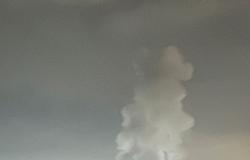Off the coast of Vancouver, Canada, 2 thousand earthquakes recorded in one day: a new oceanic crust is forming
It was registered a record-breaking seismic activist in Canada. News that quickly went around the world, considering the figures indicated. This all happened off the coast of Vancouver Island and, scientists believe, it could be an important step towards the formation of a real new oceanic crust.
Thousands of earthquakes in Canada
Why did the news of earthquakes recorded in Canada quickly go viral? The reason is connected to the number of tremors indicated by the experts: almost 2 thousand in a single day. The unprecedented event occurred in early March 2024. It may indicate the process for the formation of new oceanic crust.
This would happen through a magmatic rupture in the extreme depths of the sea. It is important to point out, however, that the citizens of Vancouver, and of Canada in general, are in no way in danger. This type of earthquake, in fact, does not represent a direct threat to human health.
These are generally low magnitude tremors. Specifically, the movements were concentrated in a point known as Endeavor website. This is located approximately 240 km from coast of Vancouver. A particular site that has been under study for some time. It boasts a series of hydrothermal fumaroles and is on the Juan de Fuca Ridge, where the ocean floor is receding.
An area separated from the subduction zone (region where a tectonic plate slowly sinks into the mantle, beneath another plate), which is much closer to the coast and can generate destructive earthquakes. This is the reassurance of Zoe Kraussfrom the University of Washington.
Scientific analysis
This type of earthquake is actually very useful for discovering further details about the ocean floor. Specifically about how he walks away and a new crust forms. The Pacific plate and the Juan de Fuca plate are moving apart, right at the aforementioned Endeavor site.
An elongation that generates linear fault lines, effectively thinning the crust. All this involves a rise of magma which, when it reaches the surface, cools and proceeds to harden. This explains the formation of a new oceanic crust in extreme simplicity.
This ocean area is constantly monitored. The region has become much more active since 2018. Numerous earthquakes have been recorded, Krauss explained, but what happened on March 6 was unprecedented. A very intense activity, with the seabed shaken almost every hour by around 200 minor earthquakes. All for a daily total of 1,850 earthquakes. As mentioned, however, there was no risk for the population, also considering how the majority were of magnitude less than 1.
The scholar believes the most probable cause is a accumulation of a huge amount of stress. This is what happens when the plates move apart by about 1 meter. Stress is relieved when the magma rises in the now excessively thin crust and cools.
A cycle that repeats itself every 20 years or so. The last time the site had been so unstable, in fact, was in 2005. Since the beginning of March the seismic activity has been waning. The scholars continue their monitoring work, which has continued continuously since 2011. There are many questions still unanswered, from the source of the magma to the impact on the fumarole system.






